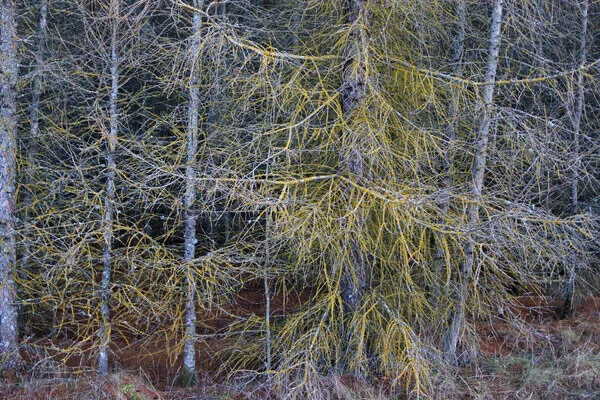Your Evergreen is Brown and Crunchy — What Now?
There is so much beauty in an evergreen tree. When the rest of your trees are turning brown and dying during the chilling Kalamazoo winter months, they are standing lively and green. However, that doesn’t mean that they will always stay that way. Various conditions, life cycle stages, and events can effect the look of your evergreen tree.
While evergreen trees are noted for their beauty and have earned their space as symbols of the winter months, they die just like every other tree does. If you have noticed that your evergreen tree isn’t exactly green anymore, it might be for a very specific reason. Browning of evergreen trees can happen during any season of the year, so you want to ensure that you tackle the problem as soon as you see it.
So what can you do to ensure that your tree is healthy? Take these steps:
Know why the tree is turning brown
- You might be able to do some research on your own
- Take everything into consideration
- Contact a professional if you cannot pinpoint the problem
Before you can actually fix the problem, you have to figure out what it is. There are so many different reasons why your tree could be turning brown: diseases, a lack of nutrition in the soil, dehydration, or an infestation. Each of those problems could lead you to another problem that you have to fix before you can save the tree.
In winter, the culprit is likely to be soil that is too cold. When a tree doesn’t have access to water, the needles will turn brown or have leaf burn, according to a Penn Live interview with gardening expert George Weigel. If you think this is the case, you can break up the soil and try to rehydrate.
What to do if it’s disease
- A disease can spell the end
- Tends to overtake the tree quickly
- May start in one small area
If your tree looks brown or sickly and it isn’t due to water, it might be infected. Often, browning will start in one small area and then quickly spread to the rest of the tree. If you catch it early, you might be able to clear everything simply by pruning the part away. However, you will often have to go deeper.
One of the most common diseases for evergreen trees is root rot. With this disease, you will see brown, wilted needles and sores running along the root system of the tree. Root rot is a fungus and can be quickly cleared by moving any damp soil away from the roots and allowing them to dry, according to Fort Collins Nursery.
Another common problem for evergreen trees is rust. This is another fungal disease that causes powdery spores on the needles. You have to prune the tree and remove every infected needle to clear it – which is why we suggest contacting a professional to limit the stress put on the tree.
How to handle it if the weather is impacting your trees
- You might be able to prevent more problems
- Make sure to look ahead
- Do not take any steps if you will not be home for a long time
We can’t always plan for the weather and lately it feels like the weather is changing more often than we do. Evergreen browning can be caused by weather conditions. Ground freezing is a big one, but it isn’t the only issue the evergreens will face.
Too much rain can lead to root rot that will open your trees up to other issues. If it is too hot and you don’t water your trees enough, they can turn brown to help preserve the water that they do have. In general, browning is just a cry for help from your trees.
According to Home Guides, “When winters are dry or so cold that the ground freezes, evergreens don’t get the water they need to make up for moisture lost through transpiration — evaporation of water through foliage — and turn brown. This is often called desiccation or leaf burn. Thorough watering from late summer through fall and topping the root zone of the evergreen with mulch can help avoid winter browning from desiccation. Brown foliage can also be caused by damage from animals chewing on the base of branches and by temperature fluctuations in the fall that don’t allow new growth to toughen up before cold weather hits, leading to tip dieback.”
The good news is that if the weather is causing the problem, you are more likely to be able to bring your tree back and have it be healthy once again.
How to make your tree healthy again
- Time is sometimes the best cure
- Contact a professional if the situation is dire
- Preventing browning is the most effective
As with almost all diseases and problems in life, prevention, and routine maintenance is the best way to fix the issue. By taking preventative steps and regularly taking care of your tree, you are less likely to see browning.
Of course, it is possible to bring your tree back with the help of a professional. Ensure that you get a professional arborist to help you prune, trim, and treat the tree in a way that will promote healing and not cause even more damage.
Unfortunately, according to New Garden, “If larger areas die out, sometimes the symmetry of the shrub is ruined. For some shrubs (azaleas, abelias, hollies and others), a hard renovation pruning will allow the entire shrub to regrow evenly. In other shrubs, including many (but not all) needled evergreens, the loss of a section is never fully recovered because of the way they grow. In those cases, replacement is usually the best option.”
If you believe that you have a problem with your trees or in your yard, give us a call today at (269) 216-6811 and we can set up a time to visit you and your beautiful trees to see just what the problem is – and how we can help you. There is no job too big or too small for our Kalamazoo professionals – contact us today!


